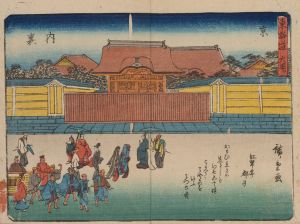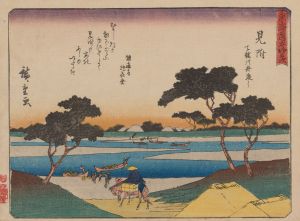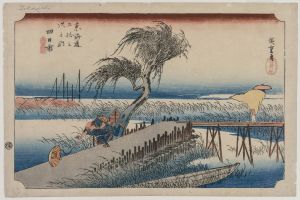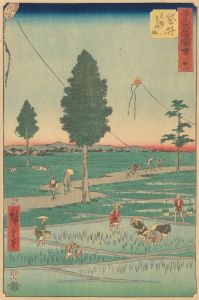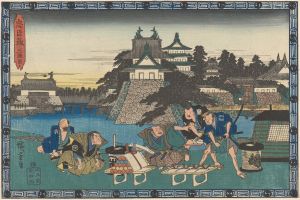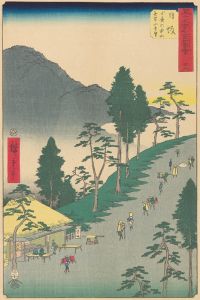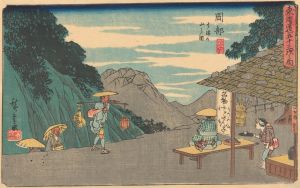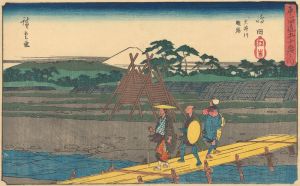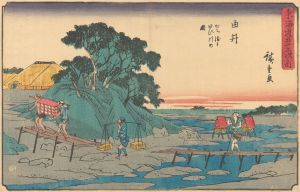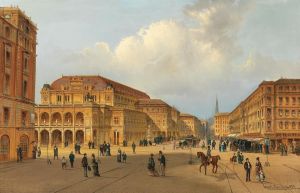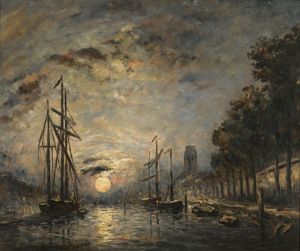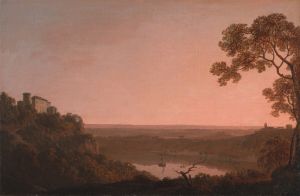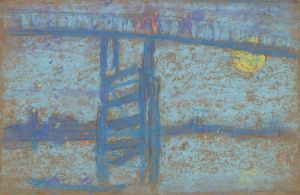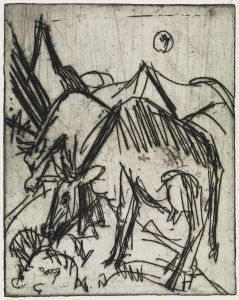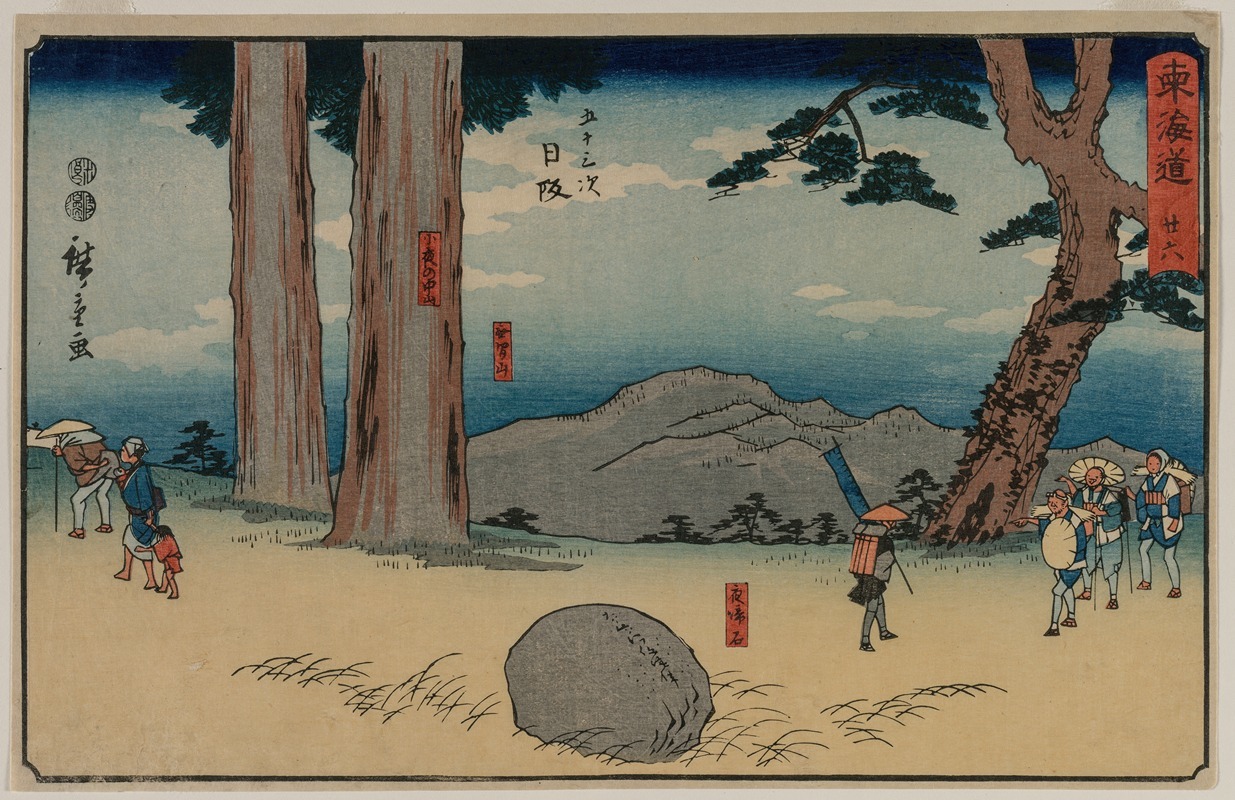
Nissaka: The Night-Weeping Stone at Sayo no Nakayama, from the series The Fifty-Three Stations of the Tōkaidō
A hand-painted replica of Andō Hiroshige’s masterpiece Nissaka: The Night-Weeping Stone at Sayo no Nakayama, from the series The Fifty-Three Stations of the Tōkaidō, meticulously crafted by professional artists to capture the true essence of the original. Each piece is created with museum-quality canvas and rare mineral pigments, carefully painted by experienced artists with delicate brushstrokes and rich, layered colors to perfectly recreate the texture of the original artwork. Unlike machine-printed reproductions, this hand-painted version brings the painting to life, infused with the artist’s emotions and skill in every stroke. Whether for personal collection or home decoration, it instantly elevates the artistic atmosphere of any space.
Andō Hiroshige, a renowned Japanese ukiyo-e artist of the Edo period, created the series "The Fifty-Three Stations of the Tōkaidō," which is celebrated for its depiction of the scenic journey along the Tōkaidō road. This road was one of the five major routes of the Edo period, connecting Edo (modern-day Tokyo) to Kyoto. Hiroshige's series captures the essence of travel during this time, illustrating the various stations along the route with a keen eye for landscape and human activity.
"Nissaka: The Night-Weeping Stone at Sayo no Nakayama" is one of the prints from this series. The Tōkaidō road had 53 stations, and Nissaka was the 25th station. This particular print is notable for its depiction of the "Night-Weeping Stone" (夜泣石, Yonaki-ishi), a legendary stone associated with a poignant tale. According to folklore, the stone is said to weep at night, mourning a tragic event. The story tells of a pregnant woman who was attacked by bandits near this location, and her spirit is believed to inhabit the stone, crying for her lost child.
Hiroshige's portrayal of Nissaka captures the mysterious and somber atmosphere surrounding the legend. The composition typically features the stone prominently, often accompanied by travelers passing by, seemingly unaware of the stone's mournful cries. The landscape is depicted with Hiroshige's characteristic attention to detail, showcasing the natural beauty of the area with lush greenery and distant mountains. The use of color and line work in the print exemplifies Hiroshige's mastery in creating mood and atmosphere, drawing the viewer into the scene.
The "Fifty-Three Stations of the Tōkaidō" series was first published between 1833 and 1834 and became immensely popular, solidifying Hiroshige's reputation as a leading landscape artist of his time. The series not only served as a travelogue for those who had journeyed along the Tōkaidō but also as a source of inspiration and imagination for those who had not. Hiroshige's ability to convey the unique character of each station, combined with his skillful use of perspective and composition, made the series a significant contribution to the ukiyo-e genre.
Hiroshige's work, including "Nissaka: The Night-Weeping Stone at Sayo no Nakayama," reflects the cultural and social dynamics of the Edo period. The prints offer insights into the daily life, travel customs, and folklore of the time, providing a window into a world that was both familiar and exotic to contemporary audiences. The enduring appeal of Hiroshige's Tōkaidō series lies in its ability to evoke a sense of nostalgia and wonder, capturing the imagination of viewers across generations.
Today, Hiroshige's prints are highly regarded and continue to be studied and appreciated for their artistic and historical significance. They are housed in numerous museums and collections worldwide, serving as a testament to Hiroshige's enduring legacy as one of Japan's most influential artists.





